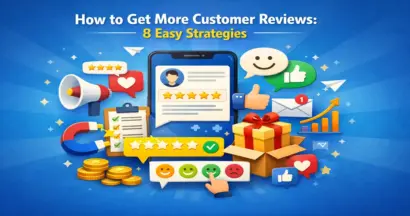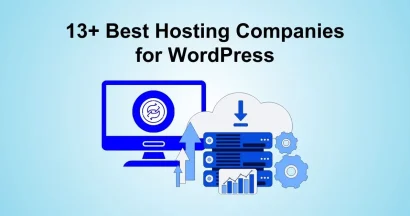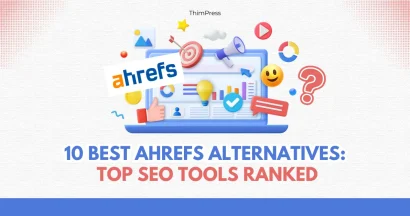One of the main reasons websites and blogs fail to boost search traffic, increase number of subscribers, and generate more leads, is the high Bounce Rate. What this means is that visitors that lands on a webpage or a post don’t click further and go away.
Let’s find out What a Bounce Rate is, and How to Effectively Reduce It.
What Is Bounce Rate?
When visitors enter your blog or site and leave it without clicking any other link on the page or navigating to other posts or pages, it is called a bounce. And the percentage of visitors who bounce is called the Bounce rate.
If the bounce rate of your site is high, then it could mean that your webpages aren’t interesting, the content is not what visitors thought to be, you don’t have proper call to action (CTA), or something is not right with your strategy.
Bounce rate is also something that is considered by Google as a ranking factor. If your bounce rate is high, Google’s algorithm will give you a lower ranking. On the other hand, lower bounce rate gets a competitive advantage.
How To Reduce Bounce Rate?
Following are the 10 most effective ways to reduce the bounce rate of your blog and website.
1. Improve Readability
After building a website, many website owners pay great attention to the content, but the same is not paid to the readability. Improved readability means better user experience.
If you have long sentences, paragraphs, and loads of content, it will scare the visitors away, even if the content has value.
While formatting the content, make use of headings and sub-headings. Keep them bold. Use bullet points where necessary, include relevant images and screenshots, bold the keywords, and keep paragraphs shorter. This will improve readability and invite the visitor.
2. Use Convincing CTA
According to a report by SmallBizTrends, around 70% of B2B businesses don’t even have any call-to-action on webpages, which results in higher bounce rate.
If you have put the right content and improved the readability, the next thing to do is to create a convincing CTA that can drive engagement. The aim of your CTA should be to make the visitors click further and get them interested to purchase or at least make them think so.
There should be proper buttons for CTA with highlights so that they can attract visitors. The words on button also decide the fate of engagement and conversion.
3. Optimize Page Speed

Slow page speed is among the top reasons of high bounce rate, because 40% of visitors abandon a website if it doesn’t load within three seconds. Further, around half of visitors expect your site to load within 2 seconds. Don’t ever test the patience of visitors, because you are going to lose them.
Hence, optimize the loading time of your site by compressing the images and other media files, choosing a premium host, minimizing HTTP requests, and following other best practices.
Optimizing page load speed is also a part of on-page SEO, you can refer to a detailed SEO article provided by ThimPress to learn more about speed optimization.
4. Don’t Mislead Visitors
Many visitors leave the website without clicking further, because they don’t find what they’re looking for. It happens when you don’t use the right titles and headings and try to overuse the keywords.
For example, if people are searching for tips to improve productivity and comes to your link, but the content is different from what title was saying. This will frustrate them, which leads to exit.
5. Avoid or Minimize Pop-Ups

Pop-ups are something that visitors hate. Many marketers believe that use of pop-ups can be used to increase the number of subscribers. However, in the long-term, it is going to negatively impact your site because nobody likes annoying pop-ups.
If you want to use pop-ups, then try to minimize it, or learn how to use pop-ups properly, because people will leave your site when they feel annoyed. If not much necessary, it will be better to avoid use of pop-ups.
6. Update Your Blog
As per a study by HubSpot, websites that keep their blogs updated with new content generate around 126% more leads as compared to the ones that don’t.
Your blog should be updated regularly with powerful and right content so that your existing users know that you are active and sharing useful articles. This helps in driving engagement and reducing bounce rates.
Further, you need to check your old blog posts to see if the facts and statements used in them are still correct. For example, if you have shared tips to boost SEO, but a certain point is no longer valid after a year, then users might find it outdated and won’t click further.
7. Get The Right Visitors

If the people coming to your site are not relevant, then why will they stay or click further? It happens because of targeting the wrong people. This is why many marketers go for paid distribution so that only the right people come to your site. Hence, lower bounce rate, higher conversions.
8. Mobile-Friendliness
Most of the visitors nowadays visit websites from mobile devices, hence, you need to ensure that your website is responsive and working well on mobile screens.
Also, Google now considers mobile-friendliness a ranking factor for websites. So, it will be better to optimize your site or blog for mobile.
Note: Check out this article to learn more about The Importance of Mobile Apps.
9. Logical Interlinking
Adding internal links is a good practice to decrease bounce rate, but if you overdo it, not do it logically, or link to irrelevant posts, then it can annoy visitors.
Having internal links in every sentence can discourage visitors to click on any link.
10. Open External Links In New Tab
When you include external links to useful and relevant resources in the posts, make sure to set them open in a new tab or windows, or the users will go to next page and might not return.
Wrapping up
These are few of the most effective tips for reducing the Bounce rate of your website or blog. By following these tips, we have significantly optimized our own bounce rate. Hopefully, these will work for you as well.
Which tips you are looking forward to trying on your blog/site? Or do you know of more tips? Let us know in the comments section below.
Read More: WordPress Security: List of Essential Plugins and Tips
Contact US | ThimPress:
Website: https://thimpress.com/
Fanpage: https://www.facebook.com/ThimPress
YouTube: https://www.youtube.com/c/ThimPressDesign
Twitter (X): https://twitter.com/thimpress


